Olivier Rousteing at Balmain: Making Craft Visible
New to Luneville embroidery?
Start with the chain stitch—my free visual guide shows you exactly how
Olivier Rousteing became the Creative Director of Balmain in 2011, at the age of 25. Educated at ESMOD Paris and previously part of the Roberto Cavalli design team, he joined a house known for its architectural silhouettes and decorative surfaces. Over fourteen years, he built a consistent visual language defined by sharp tailoring, metallic fabrics, and hand-applied decoration. He left Balmain in November 2025, after becoming one of the longest-serving creative directors in luxury fashion.
Style and colour
Rousteing kept Balmain’s silhouette constant — strong shoulders, a fitted waist, and a vertical outline — but used colour and material to control how those shapes appeared on the body.
Throughout his tenure, his palette stayed narrow. Vogue Runway and WWD reviews from 2012 through 2024 repeatedly describe black, white, and gold as the house’s base colours, with metallic silver, bronze, and deep jewel tones appearing seasonally. These colours were often chosen for how they interacted with light rather than for contrast between hues.
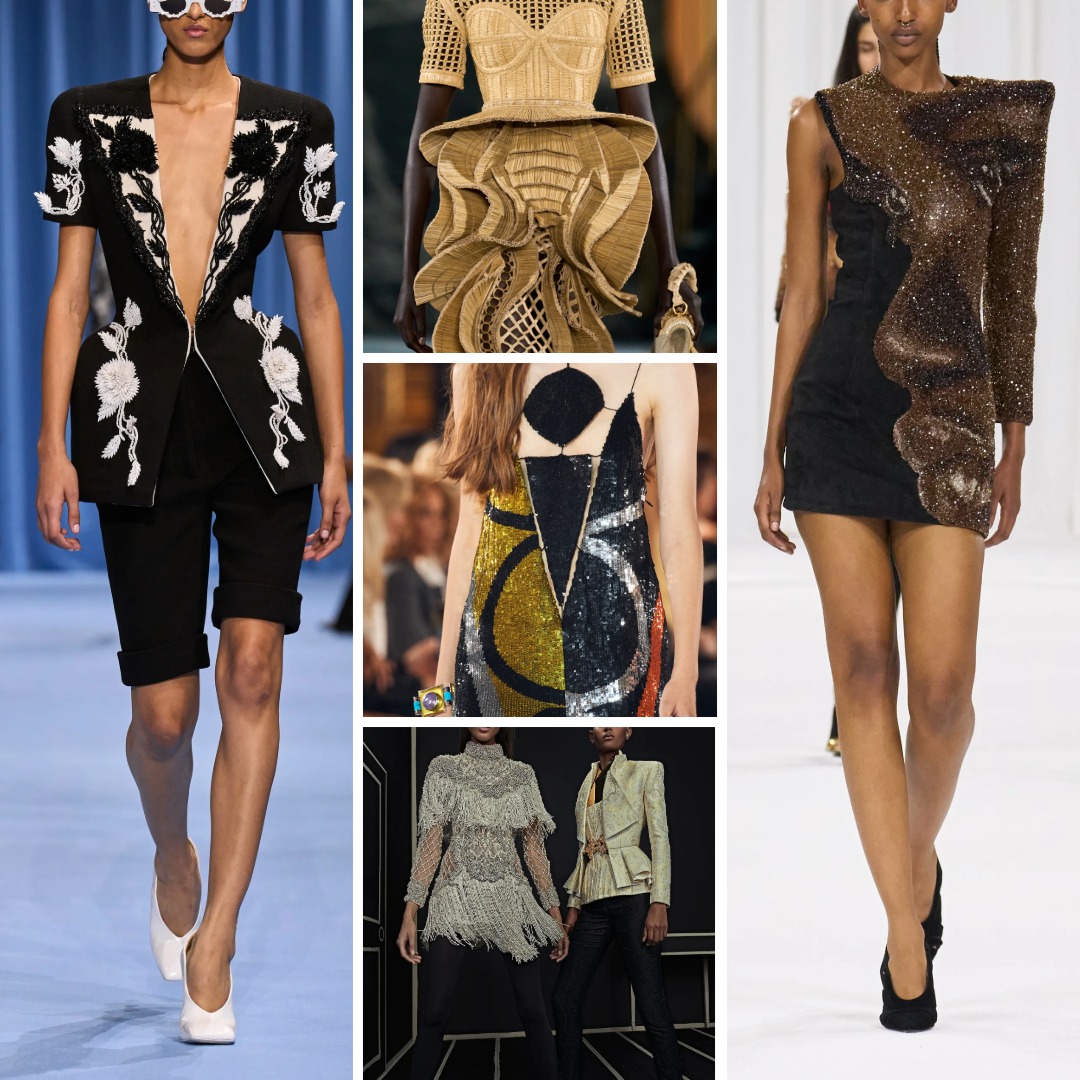
Rousteing treated colour as part of the material itself. Instead of relying on prints, he preferred tone created by metallic thread, sequins, and reflective textiles. In many collections — from the baroque jackets of 2012 to later metallic tailoring — gold or silver replaced pigment entirely. The result was a palette defined by reflection and sheen rather than saturation.
In later years, lighter tones — pale blue, mint, ivory, and red — appeared occasionally, but they didn’t alter the brand’s visual rhythm. Balmain under Rousteing remained visually recognised by its metallic spectrum and strong contrasts of light and dark.
Atelier heritage and craftsmanship
Balmain has always been an atelier-driven house. Pierre Balmain’s post-war couture relied on precise tailoring and hand finishing, and Rousteing inherited that discipline. Despite the brand’s global visibility, the foundation of his collections remained French craftsmanship.
Rousteing continued to work with historic atelier partners including Maison Lesage and others. These collaborations ensured the continuity of haute couture methods even when applied to ready-to-wear.
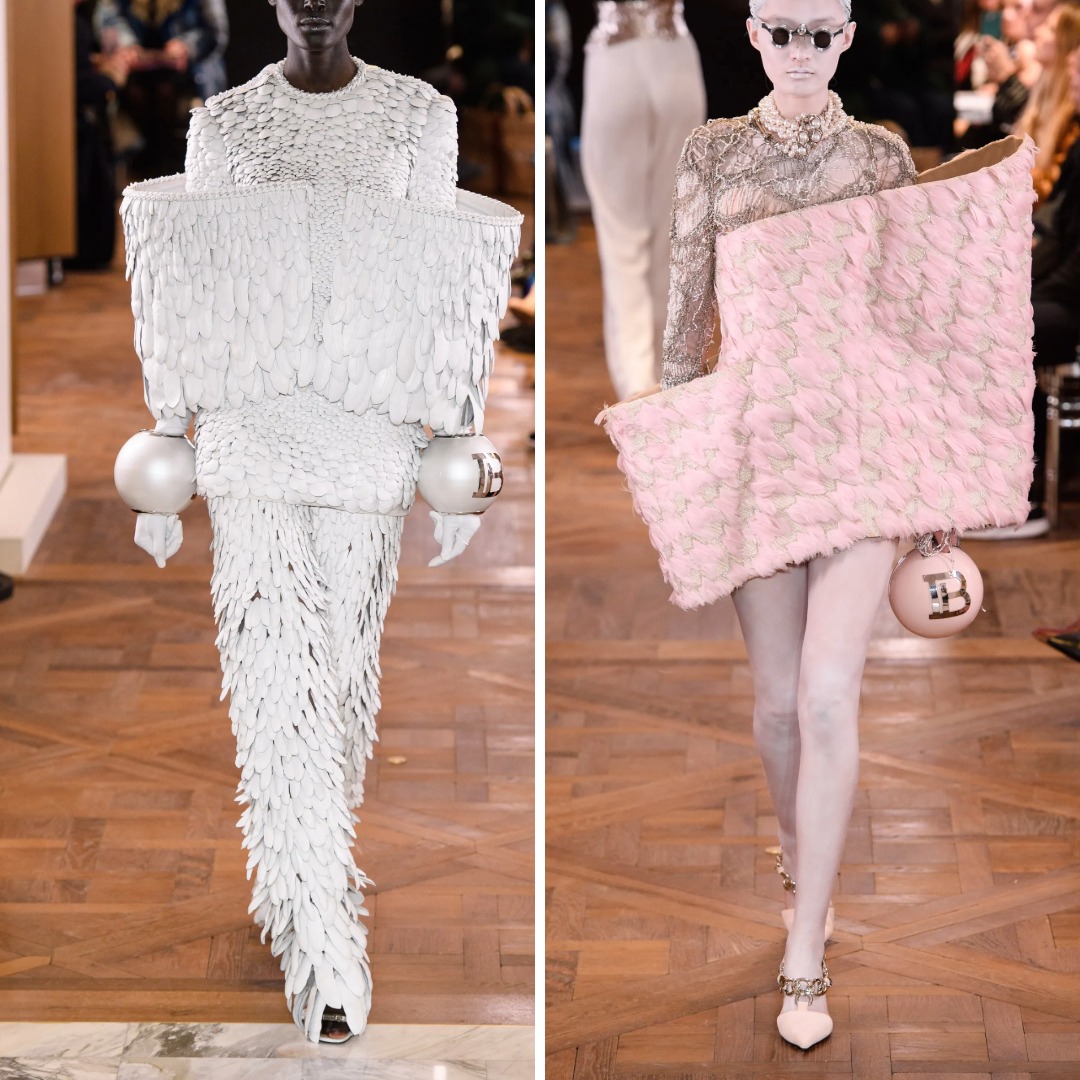
When Rousteing reinstated Balmain Haute Couture in 2019, the move wasn’t about nostalgia — it was technical. The couture line made visible the work that had always existed behind the scenes: hours of tambour beading, corded embroidery, and precise fitting.
What distinguished Rousteing’s approach was not inventing new techniques, but scaling traditional couture work into the language of a modern global brand. Balmain under his direction proved that couture skills can sustain relevance when linked to confident design systems rather than heritage alone.
Craft First
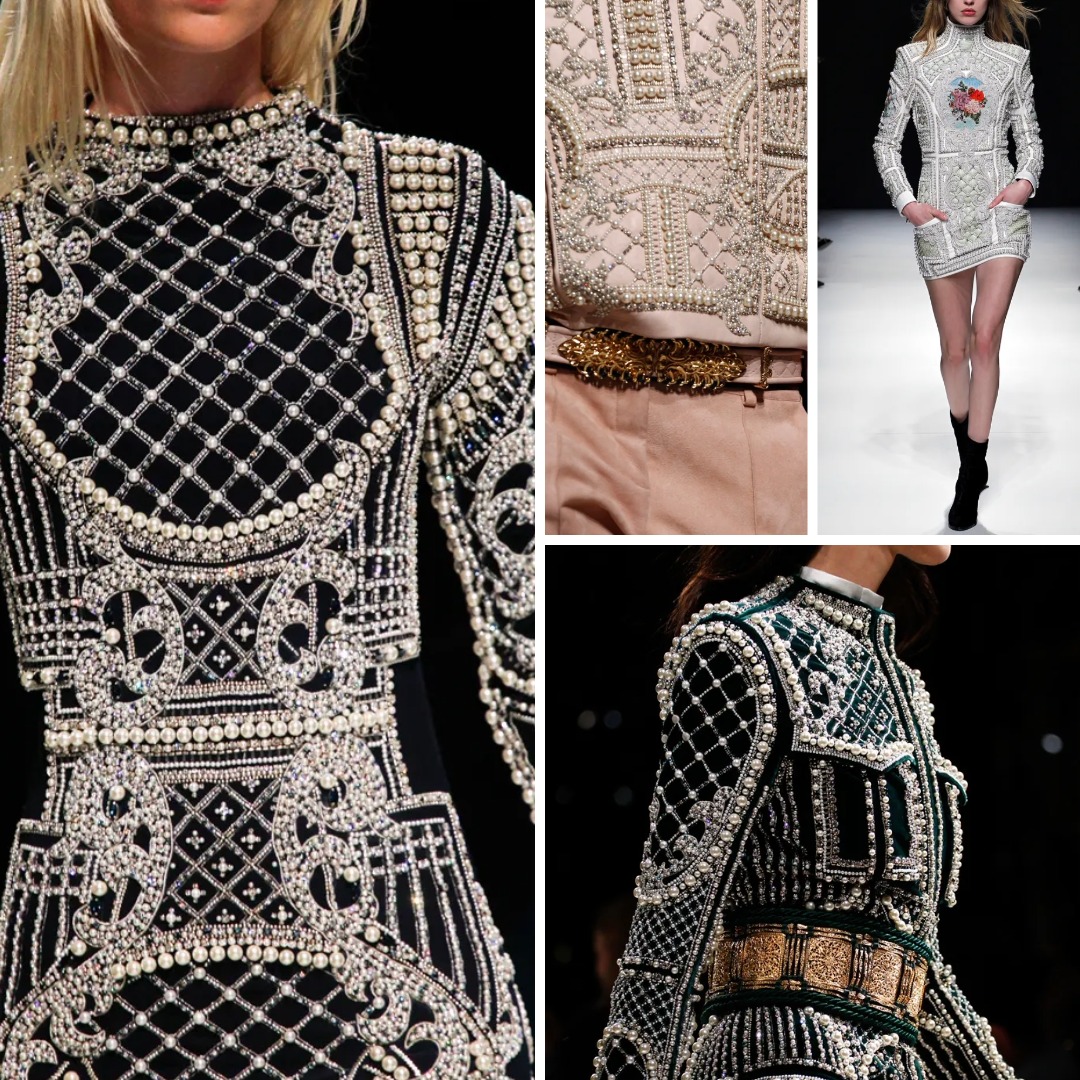
Fall 2012 RTW. Fabergé-inspired surfaces (pearls, crystals, cross-stitched florals, gold work) sit on sharp, square-back jackets, narrow trousers, and fitted dresses. Embellishment tracks edges and panel lines, so the silhouette stays crisp while the surface carries the drama.
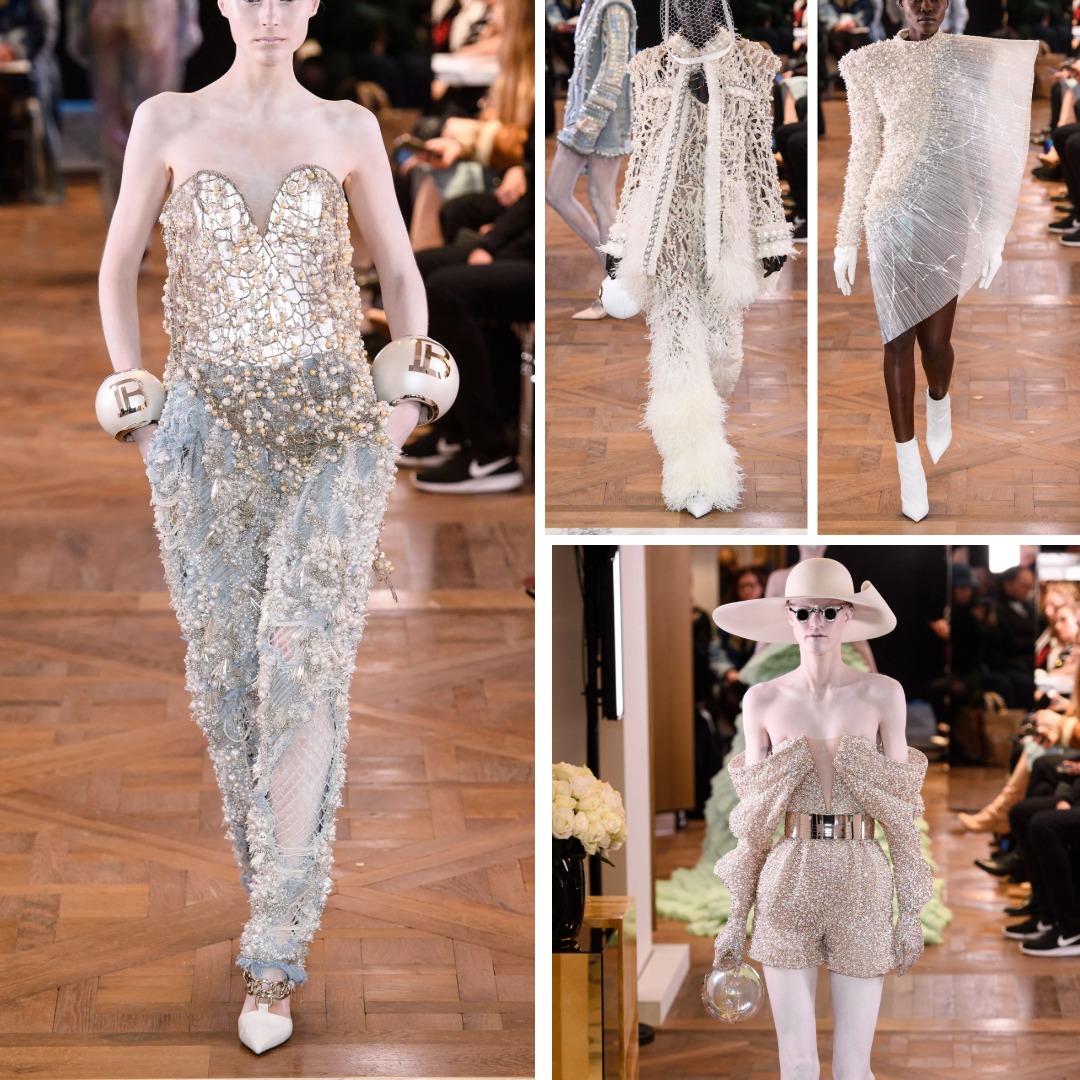
Spring 2019 Couture. Shown inside the mirrored Rue Saint-Honoré flagship, this was couture as sculptural display: bulbous and pearl-shaped skirts, asymmetric drapes, laminated/metallic fabrics, chains, pearls and Swarovski crystals, white-painted beauty and ball-shaped accessories. Critics were split, but the work is clear: extreme hand application and fabric manipulation used to build bold, architectural silhouettes.
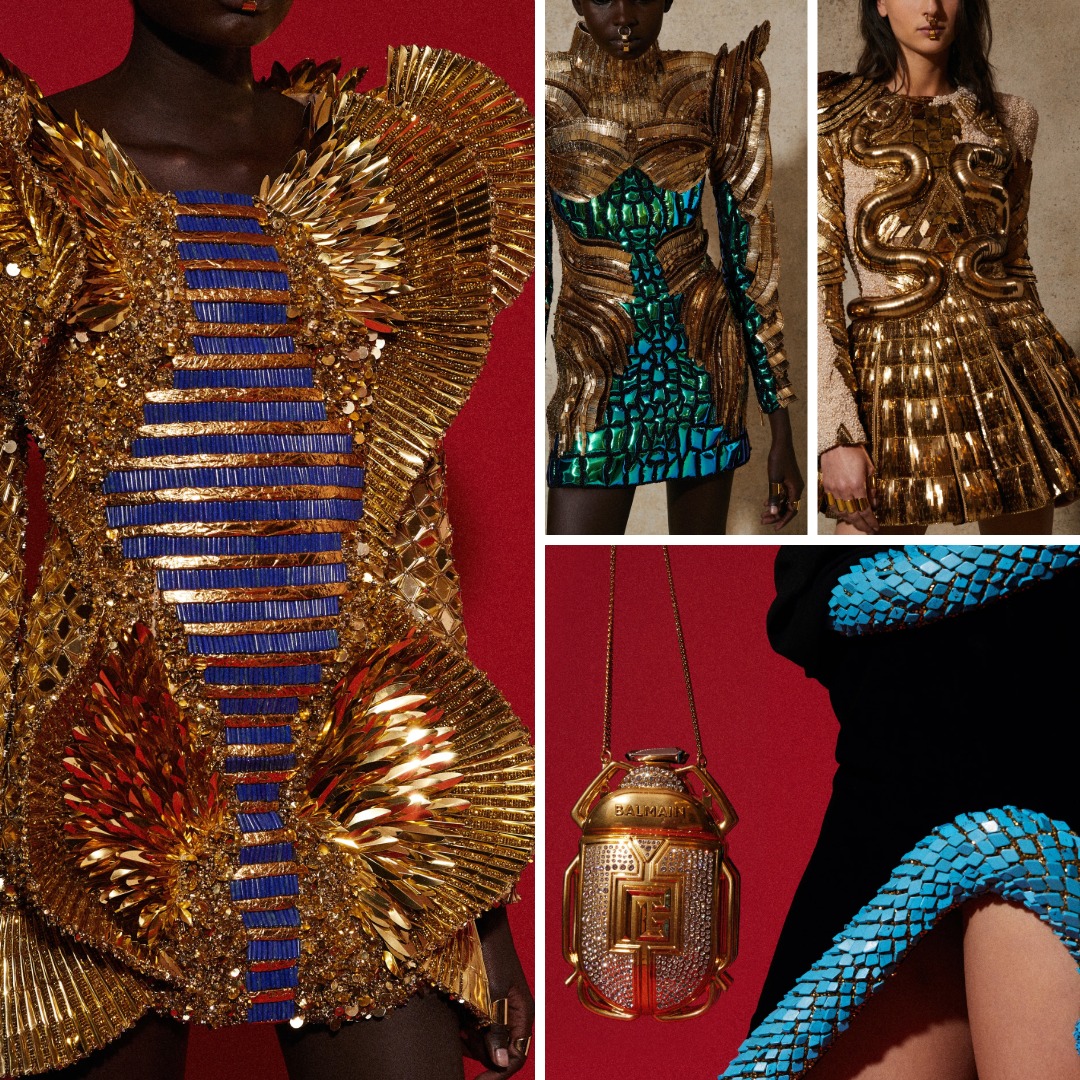
Resort 2023. The Ancient Egypt idea is handled through surface and object-making rather than print. Micro-bead embroidery creates matte, “polished-sand” textures; there are metallic animal motifs, “oyster-ish” cocoons, and even a wood-panelled dress lined in knit. Linen and organic cotton sit next to satin and metal, so luxury craft meets raw fibre — tight cuts balanced with tactility.
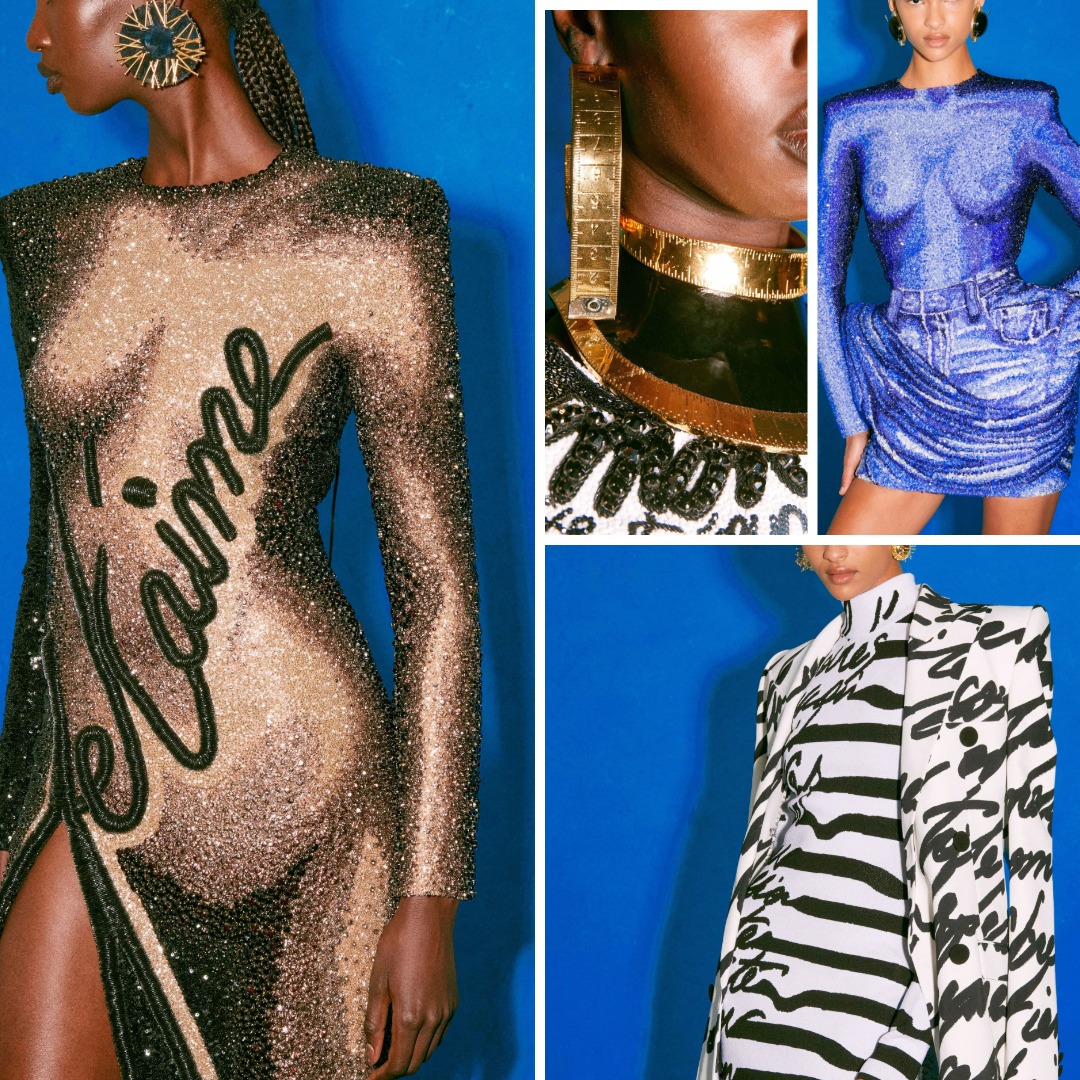
Resort 2025. Rousteing calls it a love letter to Balmain and the atelier. His own cursive—Amour, Toujours—appears as crystal embroidery along lapels, necklines and hems. Tape measures spiral as earrings and neckpieces; pin cushions become amulets. Hybrid pieces (biker spliced with trucker, double-neck knits), sharp shoulders and cinched waists remain, joined by the Anthem bag and beauty-palette silk sheaths. It’s lighter in mood but still anchored in making—the tools and handwriting of the studio turned into surface.
Legacy
Rousteing’s legacy at Balmain can be read through four lenses: visibility, technique, continuity, and business.
Visibility
He made craftsmanship visible in mainstream culture. Every close-up of a beaded jacket or crystal corset reminded a new generation that luxury fashion still depends on manual skill.
Technique
He demonstrated that couture techniques could survive — and thrive — within a media-driven brand. Rather than simplifying processes for mass appeal, he doubled down on them. The atelier remained central even as the audience expanded globally.
To learn more about how couture-level techniques are adapted for modern use, explore my Couture Camellias: Learn Luneville Embroidery Techniques
Continuity
Rousteing’s fourteen-year leadership proved that traditional couture systems can evolve without losing their technical base. Balmain’s commercial strength during his era came not despite the craft, but because of it. His approach was never nostalgic — it was methodical.
Business and Visibility
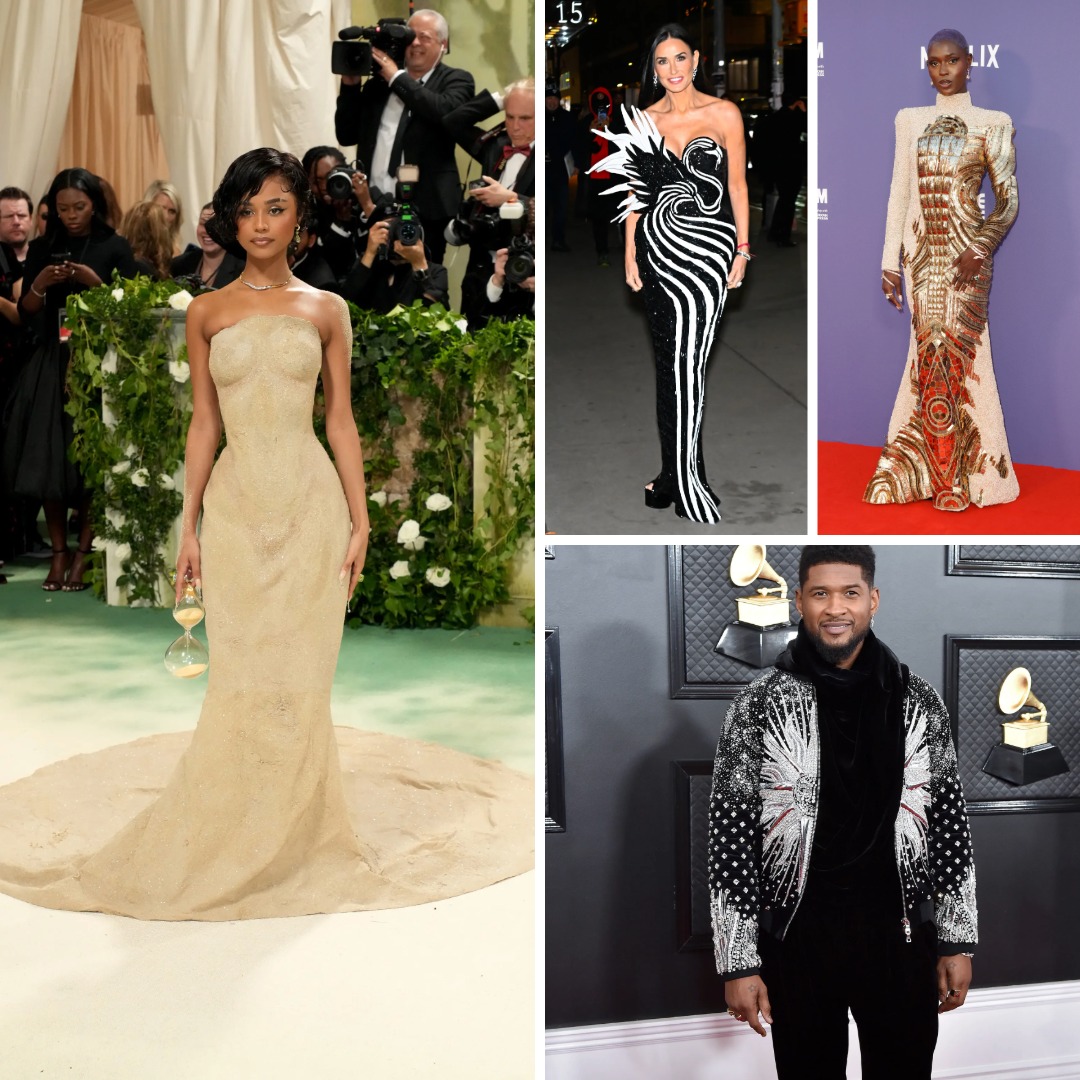
Rousteing consciously positioned Balmain as a luxury house built for the digital and celebrity age. By dressing figures such as Beyoncé, Rihanna, and Kim Kardashian in hand-embroidered and crystal-covered pieces, he turned craftsmanship into cultural visibility. The so-called Balmain Army made couture techniques recognisable to audiences far beyond fashion circles.
Social media functioned as an extension of the atelier: close-up images of beadwork, metallic fabrics, and sculpted silhouettes circulated globally, showing that these effects were achieved through manual skill. For Rousteing, visibility wasn’t simply marketing — it was proof that traditional techniques could remain relevant within a fast, image-driven world.
Written from my perspective as a textile artist working with couture embroidery, this analysis is part of my ongoing focus on how traditional techniques shape contemporary fashion.
Learn more about Ksenia Semirova →
Written By
Ksenia Semirova
MA Textiles
An experienced hand embroidery and textile artist based in Hove, UK. Professionally practicing since 2021, mastering various techniques.
Also a fine artist and visual researcher, exhibiting her works across the UK and internationally.
Join my mailing list
Get the latest and greatest updates to your inbox!